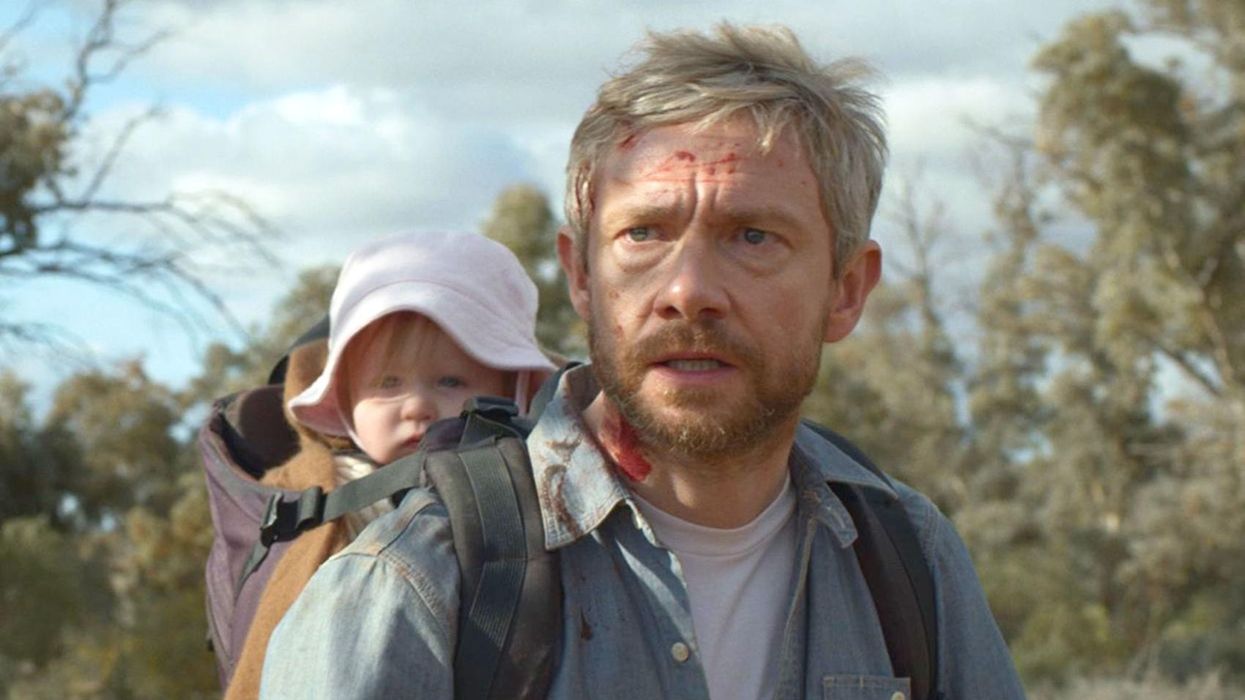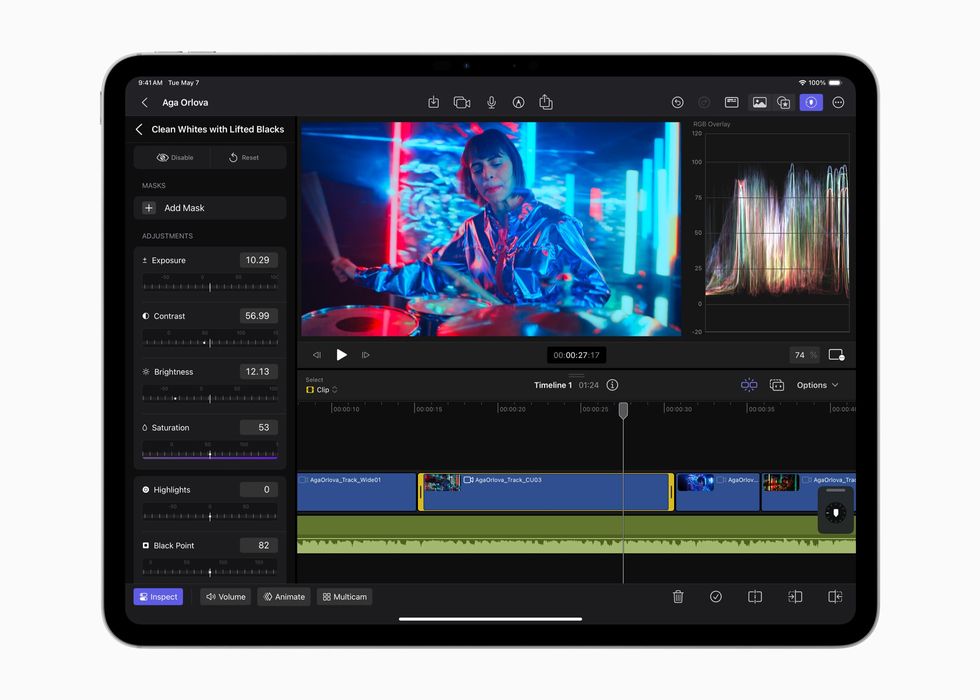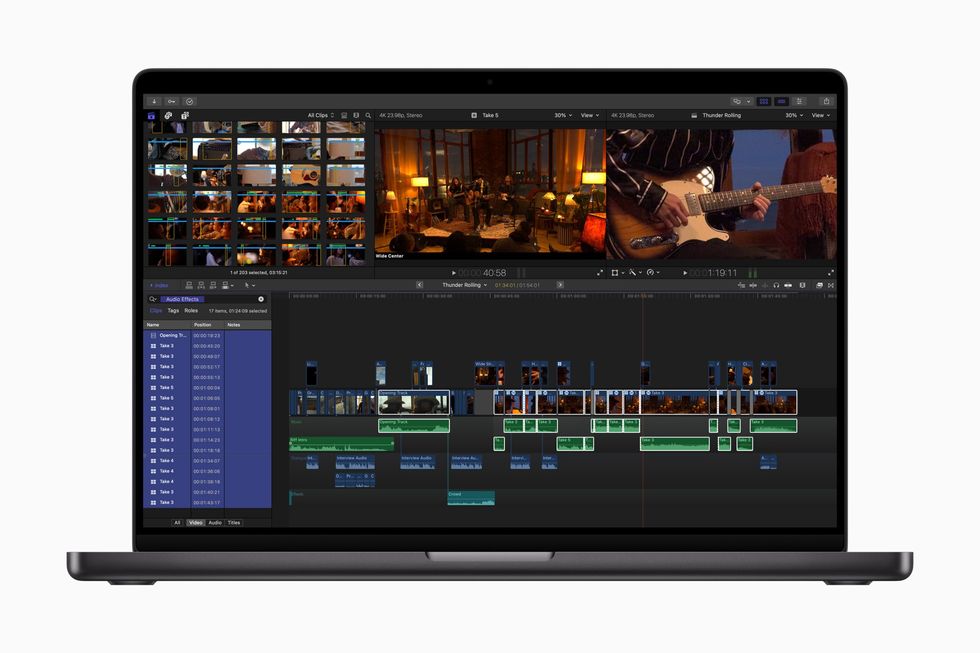'Cargo' Prosthetics Designer on How to Make Realistic Zombie Effects on a Budget
To pull off realistic zombies roaming the Austrailian outback, prosthetics guru Larry Van Duynhoven went practical.

A sense of pressure coming from all sides asserts itself early in Cargo, a new Netflix film directed by Yolanda Ramke and Ben Howling and starring Martin Freeman and Susie Porter. Freeman and Porter play Andy and Kay, parents in the Australian outback of the near future, caring for a baby in the aftermath of a massive pandemic that has left little behind. All that remains are a few desperate humans and bands of roving zombies who bury their heads in the earth when they're not searching for food.
When Kay is bitten and subsequently infects Andy, the pressure amplifies, as he must escape the pursuing zombies and save his baby not only from them but, once the disease takes hold within a 72-hour window, from himself. Andy's need to do the right thing for his child before it's too late (and he can no longer control his actions) is his central objective. To carry this out, he will have to make his way through the outback in what amounts to a tour of the stages of survival.
When we finally see the zombies, they make a considerable impact, due to the incredibly careful and elaborate work done by Larry Van Duynhoven, the special effects/makeup expert on the film. No Film School spoke with Duynhoven, who has also worked on such films as Hacksaw Ridge,The Bank Job, and Lion, last week to find out how he created the appearance of the zombies and how he showed the humans' gradual transformation.
No Film School: The physical development of Andy and Kay is gradual once the zombies' sickness takes hold. How did you work to achieve that from a prosthetics perspective?
Larry Van Duynhoven: Yolanda and Ben were very keen to work out a way that we could do it and still have the audience care for him. They didn’t want to expose and disfigure him too much, too early, because you’d lose the audience. This involved allowing the makeup team to degrade him slowly, at first just using sweat and dirt, and then later on using some gel with his makeup.
Obviously, the zombies had these oozings coming from their eyes and mouth, and so we eventually had to give Martin a little of that too, but we didn’t want to go too over-the-top. We still wanted Martin to look like Martin. So, it was a bit of a juggling act. Since we needed viewers to connect with Martin and feel for him, we wanted to do just enough to show, towards the end, that he’s gone zombie (but not cold). Whereas the others… [laughs].
Also, the design of this film is different from normal zombie films, even if this isn't necessarily a zombie film but does happen to have zombies in it. I saw Cargo as a love story with all of these real emotions in it, just happening to have zombies running around.
"It’s a low-budget film, so in order to make it work well and make it look better than what the money allowed for, I took the initiative to do the original designs out of my own pocket, just to win the job."
NFS: When the movie was being shot, were the characters' physical changes something you kept track of in the script? How was it planned out?
Van Duynhoven: I really wanted to make this film, and so I contacted the directors myself. It’s a low-budget film, so in order to make it work well and make it look better than what the money allowed for, I took the initiative to do the original designs out of my own pocket, just to win the job. I approached a friend of mine named Phillip Justice, a very successful artist, and gave him an idea of what I wanted, zombies that had kind of a chrysalis look to them.
Between us, we got this great story going: we took stuff like the vomit coming out of their eyes and said, "How can we make this unique?" We’d grown up watching all those American films, like from George Romero, and so we decided we had to make it in Australian. The gum tree, located in Australia, has a lot of sap coming off of it, with an amber look to it. We took elements like that from the Australian outback and put them into our zombies.
We had other designs that included cracked mud, which is also part of the outback. We had it all mapped out, and when we started filming, things changed a little bit, due to restrictions. These didn't occur on a daily basis, of course, but you can’t write anything in concrete because sometimes what you hoped for is not going to work. We were really stuck out in the middle of nowhere, about a mile-and-a-half away from civilization, away from anywhere.
There were wild horses, there were camels, and we were around the corner from an aboriginal community. So, for problems that came up, we kind of had to think on our feet. It was definitely a challenge.

NFS: To what extent was the work collaborative?
Van Duynhoven: Basically, once I sent them the design and they responded that they loved it, from that point on, we had a board where we put images that worked, and we collaborated. They were very strong in their opinions too, which was good.
Sometimes, I didn’t like some of their directions and I’d try to change them and go there, and then they’d go here. But that was all early in the pre-production. We had about six weeks of pre-production, with a very small team of artists that I had in the workshop. The directors were in a different state than I was, so we’d send images and pictures to each other. That worked really well because the communication was very open.
I’m the type of person who really pushes it. I just keep working throughout the day because I just want to see it, you know? And then on-screen, I want to see the magic. Some really nice designs didn’t make it, but it was really more of a story than a zombie film. It was definitely a whole team effort, and I think that’s why it works so well.
"I thought the only thing I could really do is to put these prosthetics on their eyes to make them look crusty, and also have stuff drying around their mouths."
NFS: I recently interviewed the director of The Cured, which was also about the relationship of zombies to sickness. How was the sickness reflected in what you were doing in this film?
Van Duynhoven: I wanted to go a bit more “monster” originally, but the directors from the get-go said they didn’t want the zombies to be the flesh-eating crazy kind, but something more human. They said that they wanted them to go through this transformation, but they wanted it to be up in the air a little bit. Are they dead? Are they alive? That’s what spoke to the design element, but they really needed to look at the art, because we’ve ultimately got a bunch of guys who’ve got honey dripped on their eyes and on their face (or at least that’s what it looks like) and I didn’t want to just have that.
It became a matter of changing the faces without changing them too much--we didn’t want to have a really big jawbone or really big teeth. I thought the only thing I could really do is to put these prosthetics on their eyes to make them look crusty, and also have stuff drying around their mouths. We also had to work with skin textures, making prosthetics that would go over their faces and have translucency and pock marks—and once the translucent part pops out, it leaves a little bit of a scab. So it’s a very subtle process, making just enough to show the transformation without being ghastly.

NFS: What was the comfort level like for the actors wearing the prosthetics and makeup?
Van Duynhoven: The material we used on the job was not the easiest product to get off. When you’re in it all day and you’re sweating, it’s okay, but when we did the night shoots, the actors weren’t sweating, and it was bloody hell to get it off. Martin was fantastic as he’d worn prosthetics before, in the United Kingdom and on The Hobbit. It was getting hard on him, though, because he was wearing a lot of it. It was Susie Porter’s first time wearing prosthetic contact lenses, and she was wonderful.
"When all that stuff dries, it cracks, and it looks like dried snot."
NFS: Can you tell me about the scene near the middle of the film where the lower half of Susie Porter’s face is more or less covered with gelatinous goo after she's become a zombie? How was that scene set up?
Van Duynhoven: We had a cast of the face, and then, for the drip effect, we sculpted that gelatinous look over the eyes, and then we molded that and made these silicon prosthetics that were kind of webby (they had these little holes in them) and stuck it on. She could breathe out of it. She also had a little window where she could look out of, which enabled us to make some zombie-ish contact lenses for her.
That was a tricky day, because the base where we had the makeup trailer was 40 minutes from where we were shooting the scene. So, we had to put that makeup on and then had to travel 40 minutes, trying not to hit kangaroos on the way. When she’s stuck in the car in that car scene, she’s got a big tree branch going through her chest. That was a specially designed rig that she had to get into, and once she was in there, she wasn’t coming out. She was stuck there, and the door was all beaten in from the crash, making it hard to get in there to do touch-ups.
"To get that amber look, I was trying to match the tree sap but wasn’t getting it. In the end, I used shellac flakes, like you would use to polish furniture."
Once I had those on her, I made this paste with a food thickener that’s a bit like KY jelly. I tinted that with food coloring to give it that slimy pus look. I also added some white paste, like kids use for paper in school. When all that stuff dries, it cracks, and it looks like dried snot. So we put that on for the wet look, and as the day got on, it dried, and it began to look creepy and disgusting.
To get that amber look, I was trying to match the tree sap but wasn’t getting it. In the end, I used shellac flakes, like you would use to polish furniture. I added that to the gel, and when it went on, it had this beautiful translucent shellacked look—but it didn’t look like shellac, it just looked like amber. In the desert, in the outback, when the light hit, it gave a nice glint that complemented the location where we were shooting.

NFS: I also wanted to ask about the contact lenses.
Van Duynhoven: The directors wanted to have a very minimal look that made it more of a thriller than a horror film. They wanted zombie makeup that didn't go too far over-the-top; they wanted to retain the human element. We couldn’t sculpt a mask like you normally see, so I pushed the choice of doing the prosthetic skin textures, and then I suggested that we use these contact lenses. So they agreed, and the first thing I did was send an email to a guy in America, in the West, saying I needed twenty pairs.
I didn’t have the budget to design each and every one, so I just went to his website and picked all the ones I thought were creepy and would work, that had a contrast with the makeup, with the pus look. We just chose the ones that had the right look—it would just be a matter of keeping the light on them—and then we got them specially made for Martin Freeman and Susie Porter’s eye sizes. Without the contact lenses, the whole appearance isn’t half as effective. The eyes are very important.
For more information on 'Cargo,' click here.













